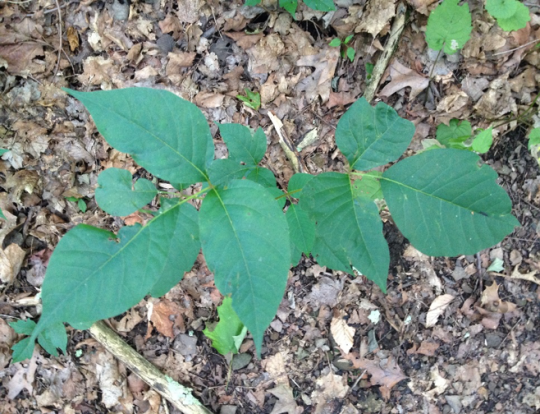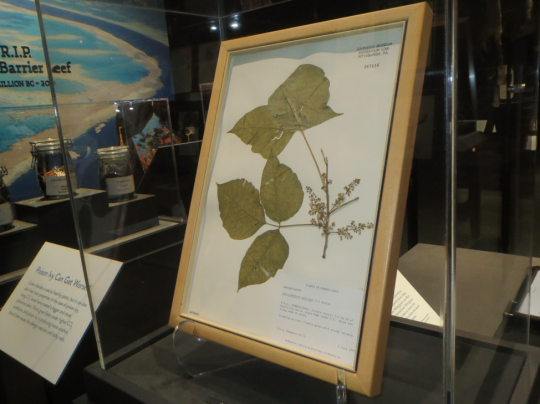By Rachael Carlberg

When prompted with the phrase “climate change,” people often think of increasing temperatures, melting ice, and flooding shores. While global temperatures are on the rise, the story of humanity’s impact on the environment is much more complex. As carbon dioxide levels in the atmosphere rise, and temperatures increase, we face unanticipated changes to the world around us.
Poison ivy, for example, grows larger in our changing climate. Higher levels of carbon dioxide in the atmosphere cause increases in photosynthesis, allowing plants like poison ivy to grow more and produce larger leaves. In carbon-rich conditions the vine also creates more toxic forms of urushiol, the oil that causes an allergic reaction in people.

Preserved poison ivy displayed in We Are Nature.
You might be thinking, if higher levels of carbon dioxide mean higher levels of photosynthesis, won’t all plants benefit? The problem is that increased levels of carbon dioxide don’t impact all plants in the same way. Vines like poison ivy can reap the rewards of increased photosynthesis with more leaf area because, unlike upright plants, they don’t need to devote as many resources to structural support like trunks and thick branches.
As an intern in the Education department of Carnegie Museum of Natural History, Rachael Carlberg wrote blog posts related to ideas presented in We Are Nature. Museum employees are encouraged to blog about their unique experiences of working at the museum.
